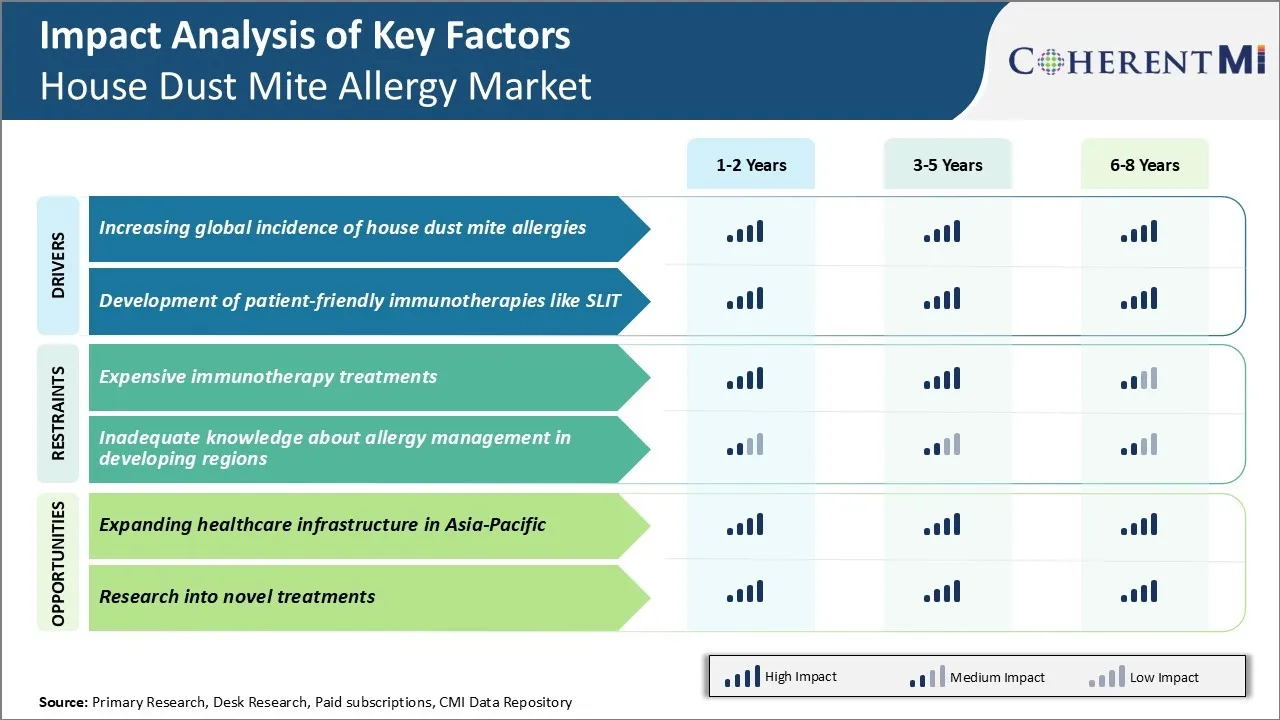House Dust Mite Allergy Market Trends
Market Driver - Increasing Global Incidence of House Dust Mite Allergies
House dust mite allergies have been on the rise across the globe in recent decades. Rising temperatures and humidity levels allow dust mites to multiply rapidly throughout the year instead of just during certain seasons. This has led to perennial exposure and increased sensitivity among people.
Changes in lifestyle and living environments have also played a role. People now spend more time indoors due to sedentary jobs and indoor activities. While this is beneficial to reduce power bills, it also prevents proper ventilation and maintains humidity levels ideal for dust mites. This has increased the concentration of dust mites and allergens inside homes.
Stressful urban lifestyles too have weakened immunity for some individuals. Furthermore, greater awareness among public and medical professionals has led to higher diagnosis rates in recent times. People are more conscious about symptoms and able to detect dust mite allergies early on.
All these macro factors have contributed to significant growth worldwide in the number of patients with house dust mite allergy. This growing patient pool is fueling increased demand for effective treatments and drugs. Pharmaceutical companies are responding to this driver by enhancing research and development of advanced therapies.
Market Driver - Development of Patient-friendly Immunotherapies like SLIT
Pharmaceutical firms are continuously striving to develop novel immunotherapy solutions that offer convenience to patients. One such innovation is sublingual immunotherapy or SLIT. SLIT has gained popularity due to its comfort and ease of use at home settings. Patients can self-administer the allergen tablets or drops daily without any medical supervision. This enables continuous therapy and makes it more acceptable for long-term compliance.
With these advantages, SLIT has emerged as a preferred choice especially for pediatric dust mite allergy patients. Parents appreciate the painless nature and flexibility of allowing children to receive treatment at home or school. SLIT medication is also affordable and frees patients from regularly visiting doctors for injections. The convenience factor is a strong driver of adherence to prescribed treatment course.
Biotech firms continue enhancing SLIT further through novel drug delivery systems. Fast-dissolving strips and orally disintegrating tablets are now available that take seconds to administer. Such innovations will further strengthen patient acceptance of SLIT. As immunotherapies like SLIT gain ground, they will expand the treatable population and drive continued market evolution in coming years.

Market Challenge - Expensive Immunotherapy Treatments
One of the key challenges currently faced in the house dust mite allergy market is the expensive immunotherapy treatments available. Immunotherapy, also known as allergy shots or desensitization, is currently the only treatment that can cure house dust mite allergies by modifying the immune system's response.
However, the treatment process requires patients to undergo regular injections, typically once a week for around 3-5 years. This makes immunotherapy a very lengthy and expensive treatment option, potentially costing thousands of dollars over the full course of treatment. The high costs put immunotherapy out of reach for many patients suffering from house dust mite allergies.
The long duration of treatment also poses compliance challenges as patients have to diligently follow the treatment schedule for years. drug manufacturers need to focus on developing more affordable immunotherapy treatments or alternatives that can help address this market challenge.
Market Opportunity - Expanding Healthcare Infrastructure in Asia-Pacific
The growing healthcare infrastructure in the Asia-Pacific region presents a major opportunity for the house dust mite allergy market. Countries like China, India, and others in Southeast Asia are witnessing rapid economic development which is helping expand access to healthcare. Rising incomes have boosted healthcare expenditure capabilities in the region.
At the same time, growing pollution and dust mite infestation levels attributed to urbanization are contributing to a rise in allergic conditions like house dust mite allergy. This is increasing the patient population that needs treatment. The enhanced healthcare infrastructure in Asia-Pacific makes it easier for patients to obtain diagnosis and treatment. It also allows global manufacturers to enter these emerging markets.
Drug companies can leverage the strengthening healthcare systems in the region to drive higher sales volumes and market growth for house dust mite allergy drugs and therapies over the coming years.